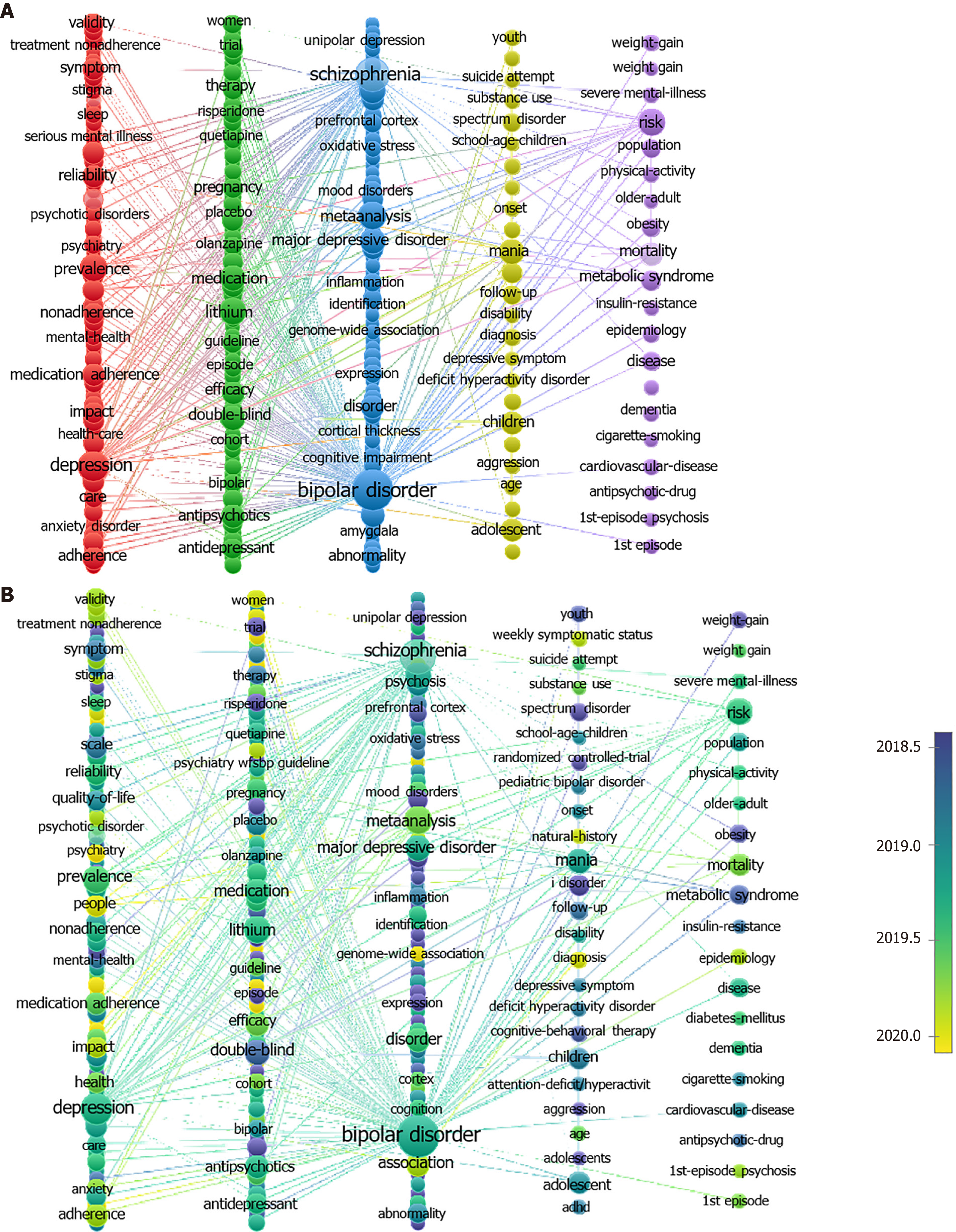Copyright
©The Author(s) 2025.
World J Psychiatry. Jan 19, 2025; 15(1): 100685
Published online Jan 19, 2025. doi: 10.5498/wjp.v15.i1.100685
Published online Jan 19, 2025. doi: 10.5498/wjp.v15.i1.100685
Figure 4 Analysis based on keywords.
A: Keywords clustering visualization. The circle and label together form a node, where the size of the circle is directly proportional to the frequency of the keyword’s occurrence. The thickness of the lines connecting the circles reflects the strength of the relationship between the keywords. Nodes of different colors represent distinct clusters; B: Keywords intensity visualization timing overlay. The circle and its label represent a node, with the circle’s size being positively correlated with the frequency of the keyword’s occurrence. The color of each circle is indicated by the gradient in the lower right corner, reflecting the average year of occurrence.
- Citation: Chen BF, Liu L, Lin FZ, Zeng HM, Huang HQ, Zhang CF, Liu CC, Chen X, Peng J, Wang YF, Wang ZL, Chen B, Liu DL, Liu Y, Li ZZ, Zeng XX. Comprehensive bibliometric analysis of pharmacotherapy for bipolar disorders: Present trends and future directions. World J Psychiatry 2025; 15(1): 100685
- URL: https://www.wjgnet.com/2220-3206/full/v15/i1/100685.htm
- DOI: https://dx.doi.org/10.5498/wjp.v15.i1.100685









